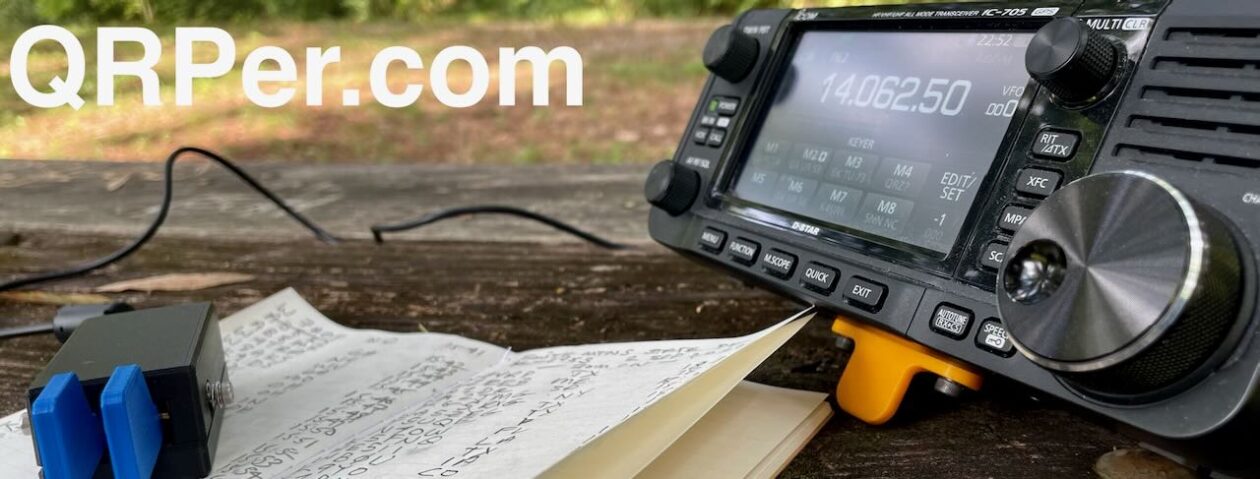 Many thanks to Steve Allen (KZ4TN) who shares the following guest post:
Many thanks to Steve Allen (KZ4TN) who shares the following guest post:
FT8 QRP Portable
I recently finished my Phaser digital mode QRP transceiver kit and have had a hankerin’ to take it portable, and today was the day.
Temps were in the upper 60s with clear blue sky. About fifteen minutes from home is the Watauga Point Recreation Area on Watauga Lake in Carter County, Tennessee. It’s a day use area and is not an official POTA site, though it is in the Cherokee National Forest, which is. I opted to not make this a POTA activation as it was more of a first time “proof of concept” trip.
The Phaser is a small digital mode transceiver designed by Dave Benson, K1SWL with the enclosure the design of AA0ZZ, Craig Johnson. Phasers were available for most all of the HF bands, put out between 3 to 5 watts, and in addition to FT8, have the ability to program a second frequency to operation other digital modes such as PSK-31. They were sold and supported through Midnight Design Solutions, but unfortunately are no longer being offered. Occasionally I see them coming up for sale on the QRZ.com swapmeet forum.

In addition to the Phaser, I brought an FT-891, an LDG Z-11Pro 2 tuner, a netbook computer, and two batteries; a small AGM for the Phaser and a deep cycle lead acid power pack for the FT-891. I brought my W2LI magnetic loop antenna and a homebrew “NorCal Doublet” that sets up as an inverted V on a 20 ft kite pole as a backup antenna. The whole kit (excluding the batteries) fits in two wooden ammunition crates which make it really easy to drive, set up, and operate.
One note on using the W2LI mag loop. You need to first tune the antenna using the radio and listen for an increase in the background noise level. Using the Phaser while connected to my computer made that not possible. If I had brought a small set of earphones I could have plugged them into the audio out jack on the Phaser and tuned for max background noise. So, instead I connected FT-891 to the loop and used it to tune the antenna to 30 meters. Next time bring earphones.
After about fifteen minutes I had the station set up. The waterfall on WJST-X showed that the Phaser was receiving transmissions but no displayed text. Unfortunately I had neglected to synchronize the computer clock before I left the house. The netbook is pretty old and the internal battery needs to be replaced. What to do? First I tried to manually sync the clock to WWV but Windows 10 won’t let you set the seconds in the clock to 00. As I had cell service I figured I could use my cell phone as a hotspot. Never having set it up before I have to say that it was pretty easy. Thank you 21st century tech! This allowed me to sync the internal netbook clock, but it also let me log contacts on QRZ.com, and check my propagation on PSK Reporter.

The Phaser puts out around 3.5 watts, so I didn’t respond to a CQ that was less than -5 dB. While PSK Reporter showed reception of my signal up and down the East coast, contacts were scarce. I seemed to have a window open up into New England as I worked PA, MA, and CT. I was right in the middle of my fifth contact when the computer battery died so that was it. WSJT-X reported these stations on the +dB side for reception but my signal strength was always reported at < -10 dB.
The 30 Meter band was up and down with band conditions being reported as only Fair on the Solar-Terrestrial Data report on QRZ, and at one point for about a half hour there were no signals displayed on the waterfall.

With a loop antenna on a tripod and 3.5 watts I can’t complain. I’m thinking of building an RF amplifier to boost the output up to 10 watts which should help. My next step is to load WSJT-X on my tablet and see how portable of a kit I can assemble. As FT8 was designed as a weak signal mode, it’s perfect for QRP portable operating.
Steve Allen, KZ4TN
 Many thanks to Brent (VA3YG) who writes:
Many thanks to Brent (VA3YG) who writes:




















